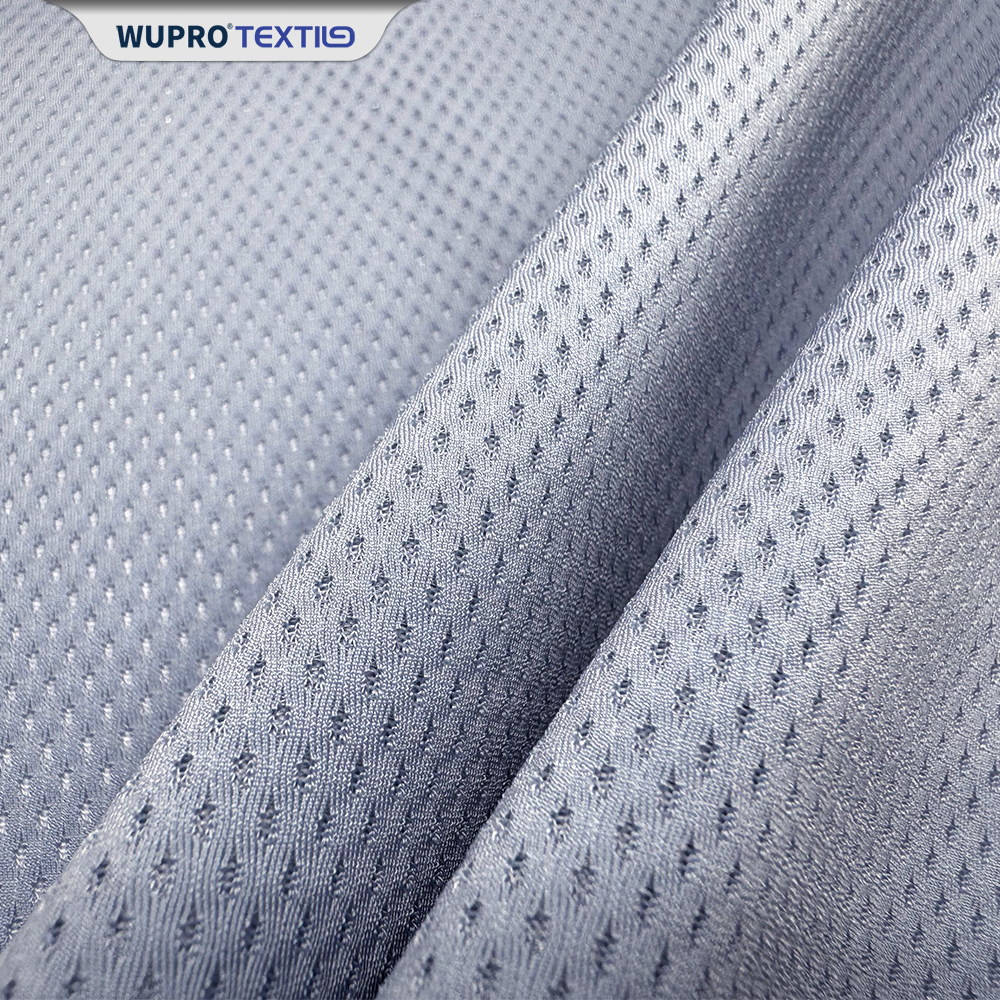The Benefits of Using Antistatic Fabrics in Cleanroom Environments
The Benefits of Using Antistatic Fabrics in Cleanroom Environments
Cleanroom environments are critical in various industries, including pharmaceuticals, electronics, and biotechnology. These spaces require strict contamination control to ensure product quality and safety. One essential component in maintaining these standards is the use of **antistatic fabrics**. This article delves into the myria
Jun 30,2025

The Benefits of Using Antistatic Fabrics in Cleanroom Environments
Cleanroom environments are critical in various industries, including pharmaceuticals, electronics, and biotechnology. These spaces require strict contamination control to ensure product quality and safety. One essential component in maintaining these standards is the use of **antistatic fabrics**. This article delves into the myriad benefits of using antistatic fabrics in cleanroom environments, covering their properties, applications, and the significant role they play in enhancing cleanliness and safety.
Table of Contents
- Understanding Antistatic Fabrics
- The Importance of Antistatic Properties in Cleanrooms
- Applications of Antistatic Fabrics in Cleanroom Settings
- Key Benefits of Using Antistatic Fabrics
- Types of Antistatic Fabrics
- Best Practices for Implementing Antistatic Fabrics
- Choosing the Right Antistatic Fabric for Your Cleanroom
- Frequently Asked Questions
- Conclusion
Understanding Antistatic Fabrics
Antistatic fabrics are specially designed materials that prevent the buildup of static electricity. Static charge can attract dust and other contaminants, posing a significant risk in cleanroom environments. These fabrics are engineered with conductive fibers or treatments that allow them to dissipate electrical charges, ensuring a stable environment that minimizes contamination risks.
The Science Behind Antistatic Fabrics
The effectiveness of antistatic fabrics lies in their ability to conduct electricity. By incorporating conductive materials, such as carbon or metal fibers, these fabrics can dissipate static charges, preventing the accumulation of dust and other particles. This property is crucial in cleanrooms, where even the smallest contaminants can compromise product integrity.
The Importance of Antistatic Properties in Cleanrooms
In cleanroom environments, the importance of maintaining a static-free atmosphere cannot be overstated. Static electricity can lead to two significant issues: contamination and equipment damage.
Contamination Risks
Static electricity can cause contaminants to cling to surfaces, including clothing and equipment. This is particularly concerning in industries like electronics, where even microscopic dust particles can lead to product failure. Antistatic fabrics help mitigate these risks by preventing static charge buildup.
Equipment Protection
Many cleanroom environments house sensitive electronic equipment that can be easily damaged by static discharges. Antistatic fabrics provide a protective barrier, reducing the risk of electrostatic discharge (ESD) that could harm critical components. By using these specialized materials, organizations can safeguard their investments and ensure operational continuity.
Applications of Antistatic Fabrics in Cleanroom Settings
Antistatic fabrics find extensive use in cleanroom applications, where their properties are essential for maintaining stringent cleanliness standards.
Cleanroom Garments
One of the primary applications of antistatic fabrics is in the production of cleanroom garments. These include gowns, coveralls, gloves, and hoods, all designed to provide maximum protection while preventing static buildup. By incorporating antistatic properties into cleanroom clothing, organizations can enhance the safety and integrity of their operations.
Equipment Covers and Liners
In addition to garments, antistatic fabrics are also used for equipment covers and liners. These materials protect sensitive machinery and tools from dust and static discharge, ensuring optimal performance and longevity. By outfitting equipment with antistatic covers, businesses can minimize maintenance costs and downtime.
Key Benefits of Using Antistatic Fabrics
Utilizing antistatic fabrics in cleanroom environments offers numerous advantages.
Enhanced Contamination Control
By preventing static charge buildup, antistatic fabrics contribute significantly to contamination control. They help maintain a cleaner environment, which is critical for industries that rely on strict cleanliness standards.
Increased Safety for Personnel
Antistatic fabrics not only protect products but also enhance safety for personnel working in cleanrooms. By reducing the risk of static discharges, these fabrics minimize the likelihood of accidents and injuries associated with static electricity.
Improved Product Quality
Using antistatic fabrics leads to improved product quality. By reducing contamination risks, organizations can ensure that their products meet the highest quality standards. This is particularly vital in industries like pharmaceuticals, where product integrity is paramount.
Cost Efficiency
While the initial investment in antistatic fabrics may be higher than traditional materials, the long-term benefits outweigh the costs. Organizations can save money on product recalls, repairs, and equipment replacement by reducing contamination and equipment damage.
Versatility and Customization
Antistatic fabrics come in various types and can be customized to meet specific needs. This versatility allows businesses to select the appropriate materials for their unique cleanroom applications, ensuring optimal performance and protection.
Types of Antistatic Fabrics
Understanding the different types of antistatic fabrics available can help organizations make informed decisions about their cleanroom needs.
Woven Antistatic Fabrics
Woven antistatic fabrics are made by interlacing conductive fibers with non-conductive materials. These fabrics are durable and commonly used in cleanroom garments, offering excellent static control and breathability.
Knitted Antistatic Fabrics
Knitted antistatic fabrics are created by knitting together yarns that contain conductive materials. These fabrics are typically softer and more flexible than woven options, making them ideal for applications requiring comfort and ease of movement.
Coated Antistatic Fabrics
Coated antistatic fabrics are treated with special coatings that impart antistatic properties. These fabrics are often used for equipment covers and liners, providing a protective barrier against dust and static buildup.
Best Practices for Implementing Antistatic Fabrics
To maximize the benefits of antistatic fabrics in cleanroom environments, organizations should follow best practices during implementation.
Regular Inspection and Maintenance
Regularly inspecting and maintaining antistatic fabrics is crucial to ensure their effectiveness. Organizations should check for signs of wear and tear and replace items as needed to maintain optimal performance.
Comprehensive Training Programs
Implementing comprehensive training programs for personnel is essential. Employees should be educated on the importance of using antistatic fabrics properly and how to care for them to maintain their properties.
Choosing the Right Antistatic Fabric for Your Cleanroom
Selecting the appropriate antistatic fabric for a cleanroom environment involves considering several factors.
Assessing Cleanroom Requirements
Every cleanroom has unique requirements based on its industry and application. Assessing these needs is critical to selecting the right fabric that meets specific cleanliness standards.
Evaluating Fabric Properties
When choosing antistatic fabrics, evaluating their properties, such as conductivity, durability, and comfort, is essential. This evaluation ensures that the selected fabric meets the demands of the specific cleanroom environment.
Frequently Asked Questions
1. What are antistatic fabrics made of?
Antistatic fabrics are made from a combination of conductive fibers (like carbon or metal) and non-conductive materials, which help dissipate static electricity.
2. Can antistatic fabrics be washed?
Yes, many antistatic fabrics can be laundered; however, it’s essential to follow the manufacturer's care instructions to maintain their antistatic properties.
3. How do I know if my fabric is antistatic?
Antistatic fabrics typically come with labels or specifications indicating their antistatic properties. Conductivity tests can also be performed to confirm their effectiveness.
4. Are antistatic fabrics suitable for all cleanroom environments?
While antistatic fabrics are widely used in cleanrooms, the specific requirements of each cleanroom should be assessed to ensure compatibility.
5. What are the signs that antistatic fabrics need to be replaced?
Signs include visible wear and tear, loss of elasticity, or decreased effectiveness in preventing static charge buildup.
Conclusion
Antistatic fabrics play a vital role in maintaining cleanroom environments across various industries. By preventing static charge buildup and its associated risks, these specialized materials contribute to enhanced contamination control, increased safety for personnel, and improved product quality. Organizations that invest in high-quality antistatic fabrics can achieve significant long-term benefits, ensuring that their cleanroom operations remain efficient and compliant with industry standards. As cleanroom technology advances, the importance of selecting the right antistatic fabric will continue to grow, making it an essential consideration for any business aiming to uphold the highest cleanliness and safety standards.
PREVIOUS:
Contact Us
E-mail:
Address:
1302, Zhongjun Fortune Center, Fengli Street, Shishi, Fujian, China.









